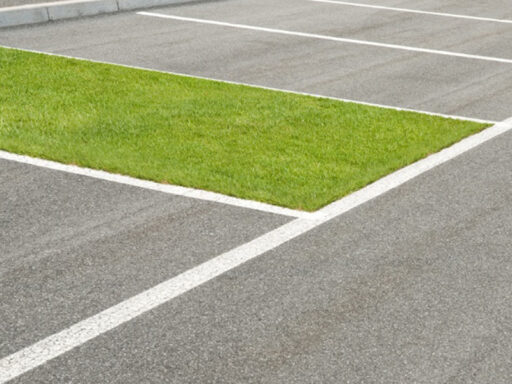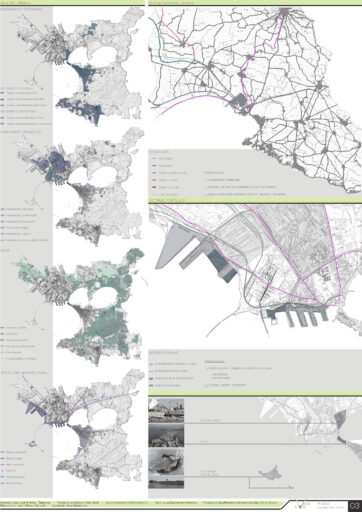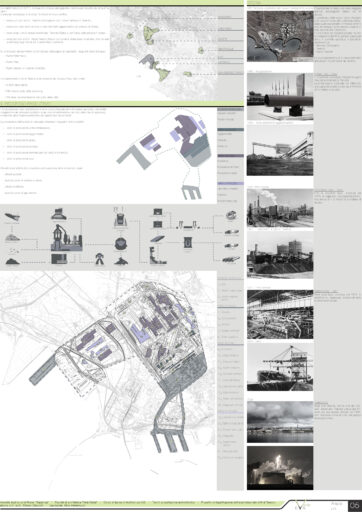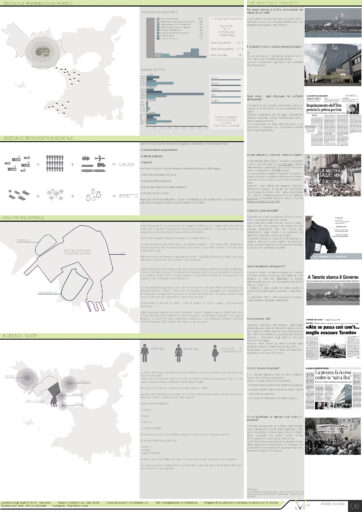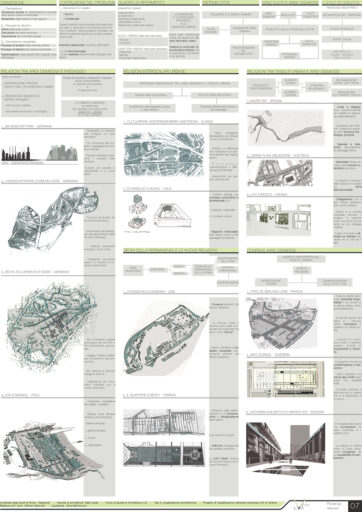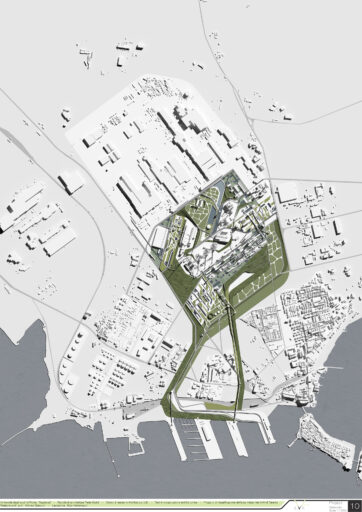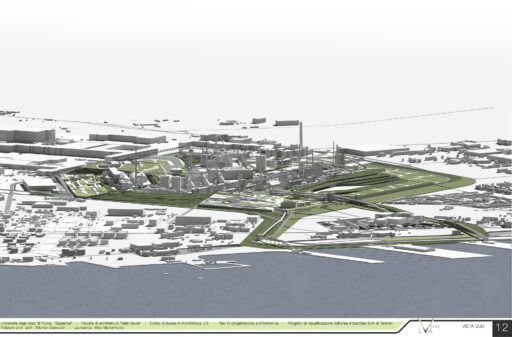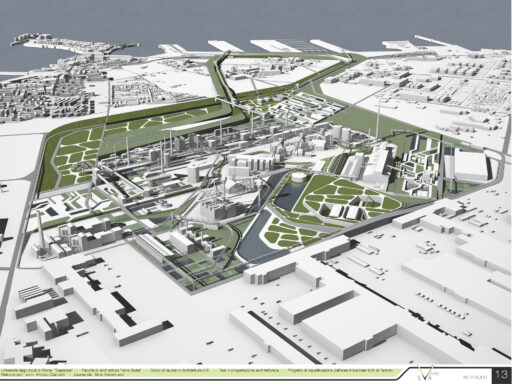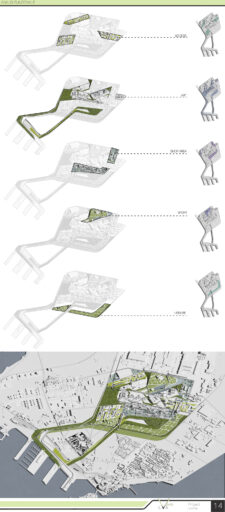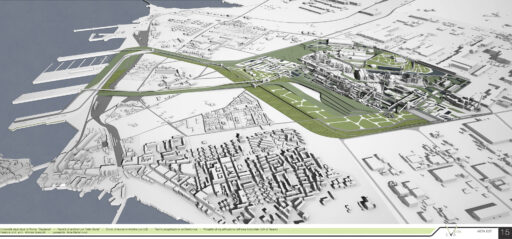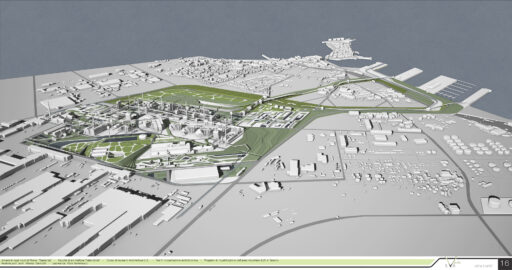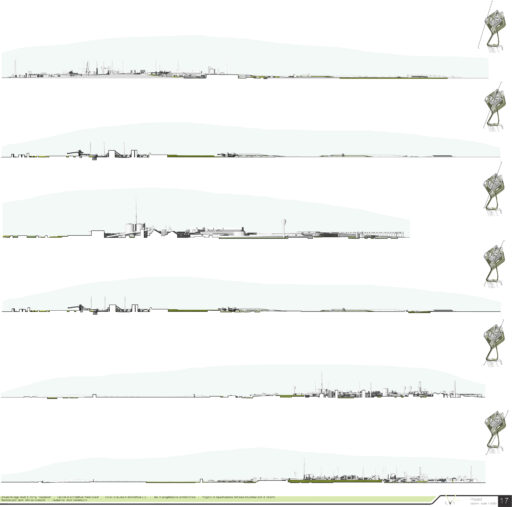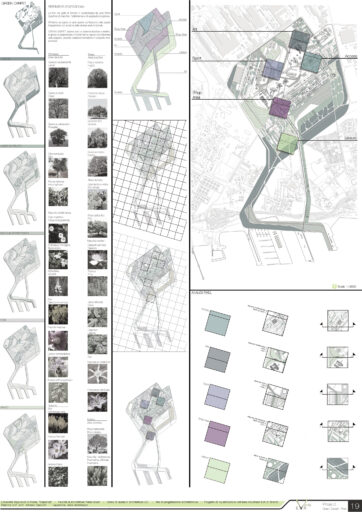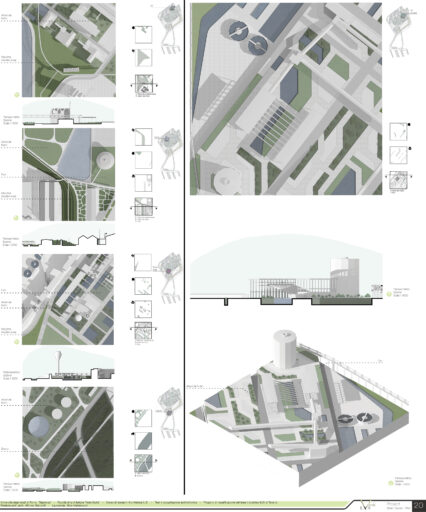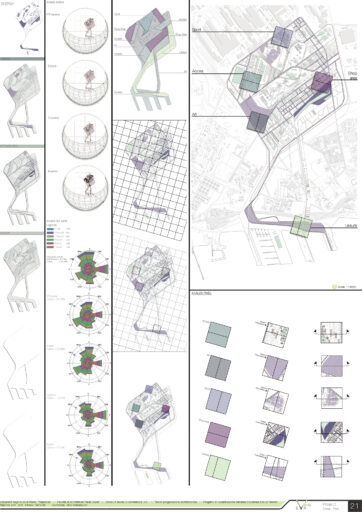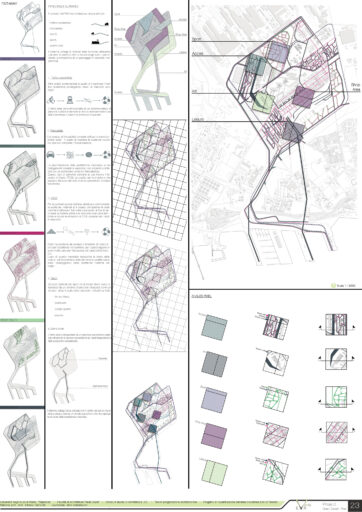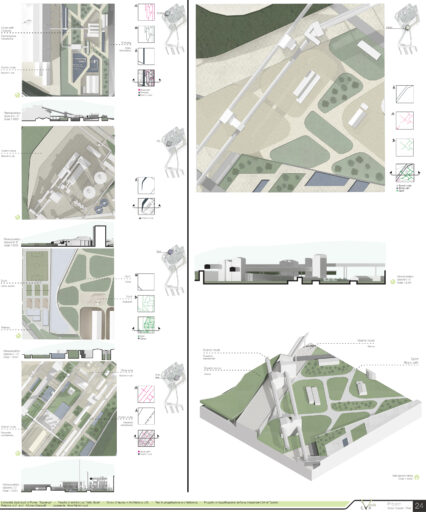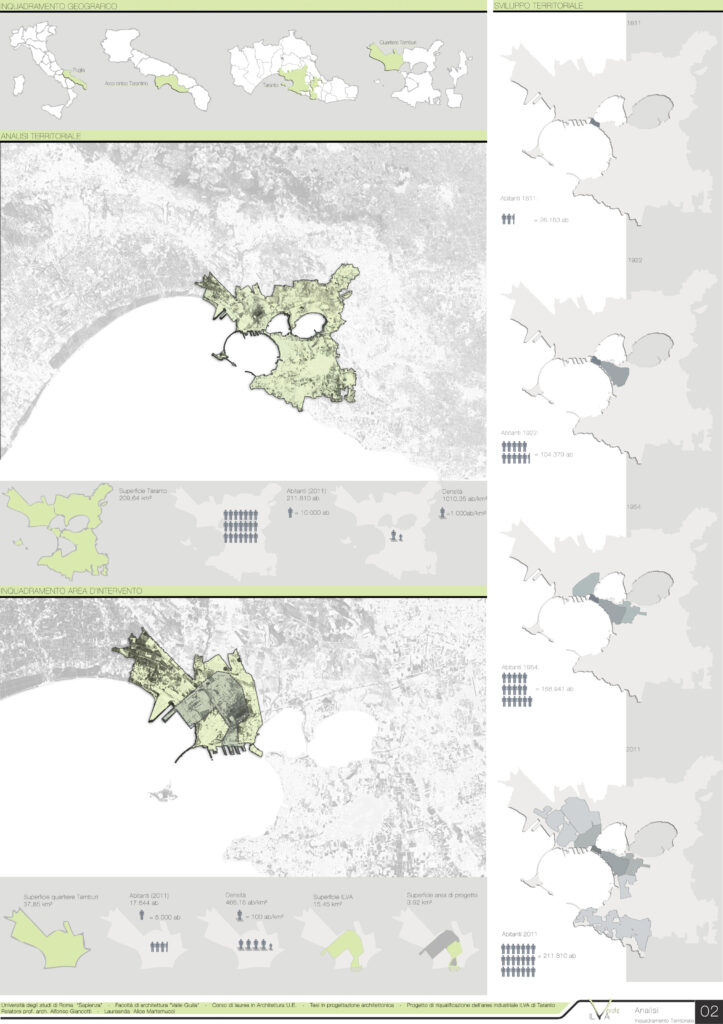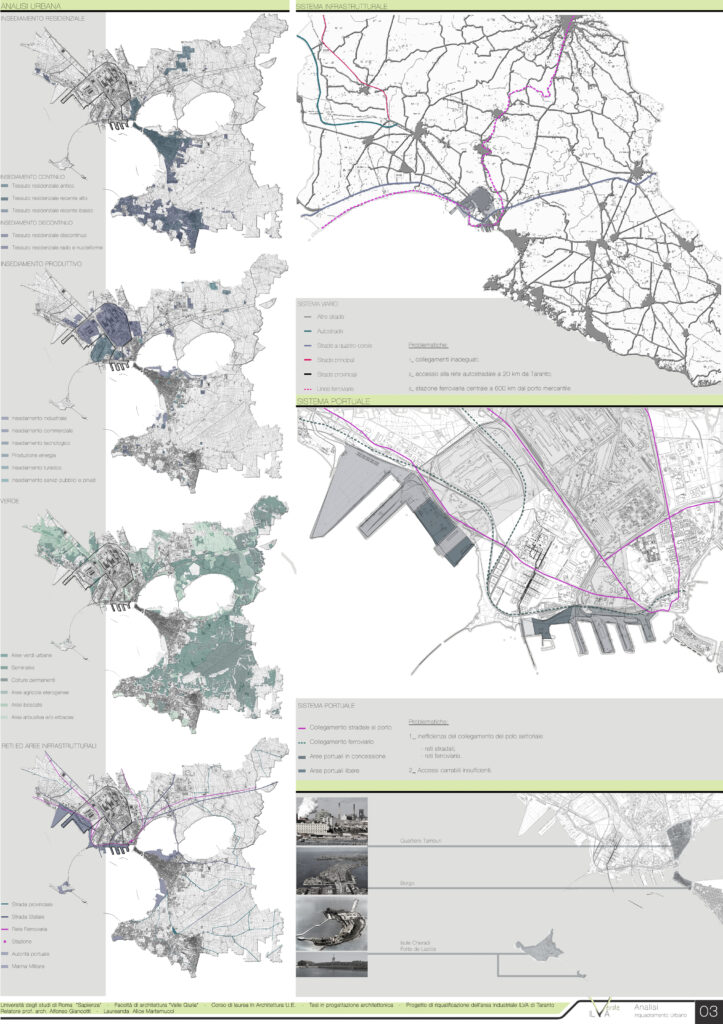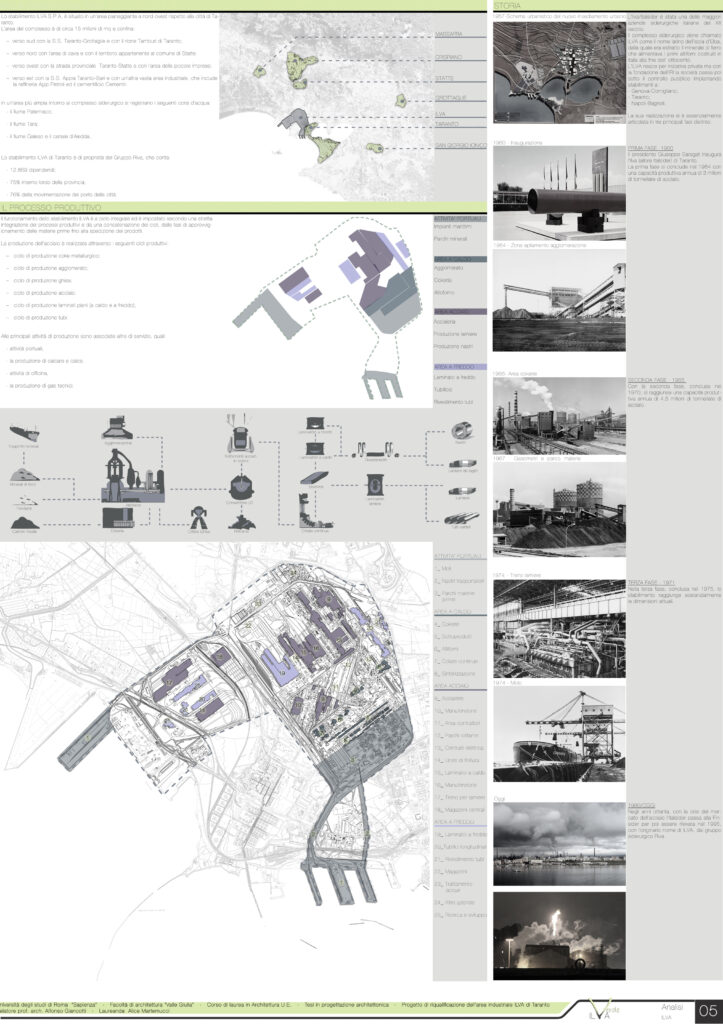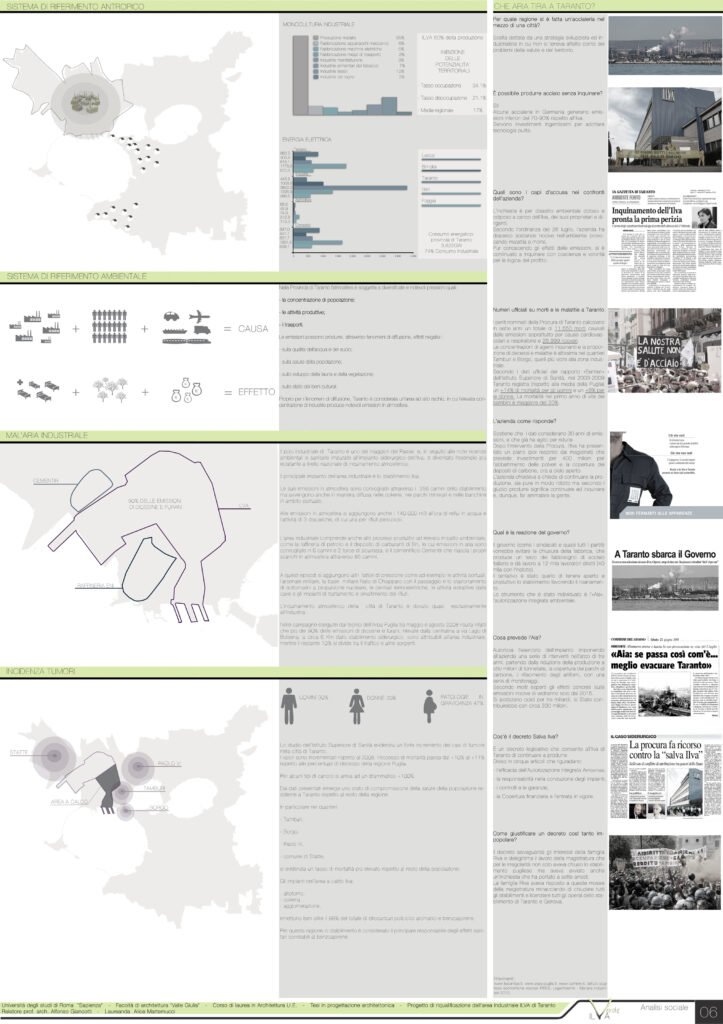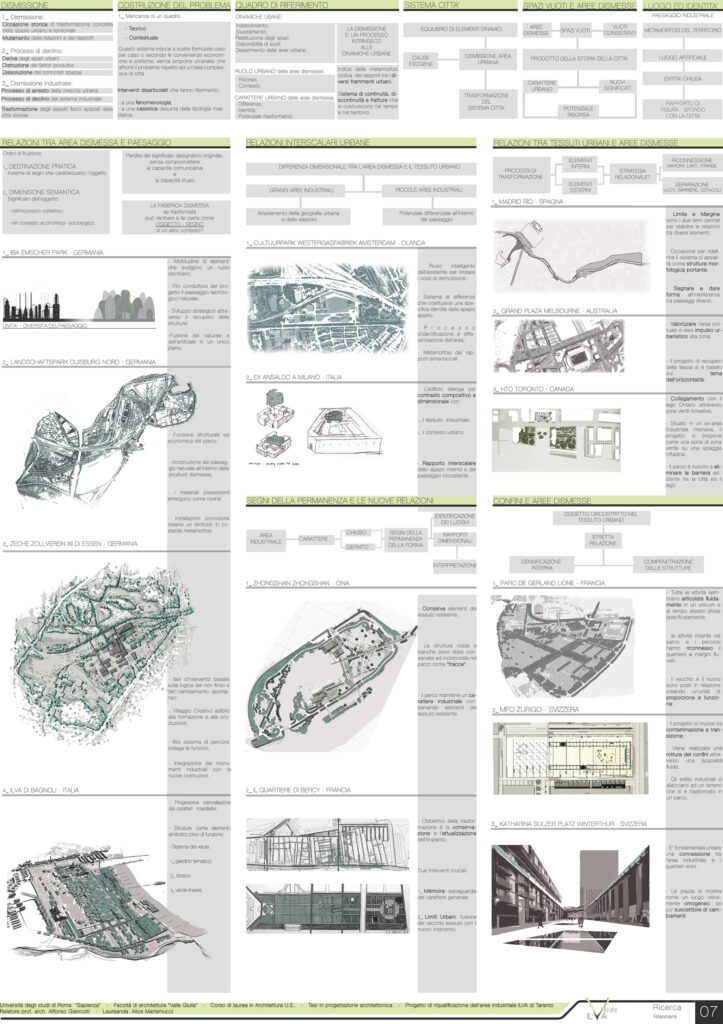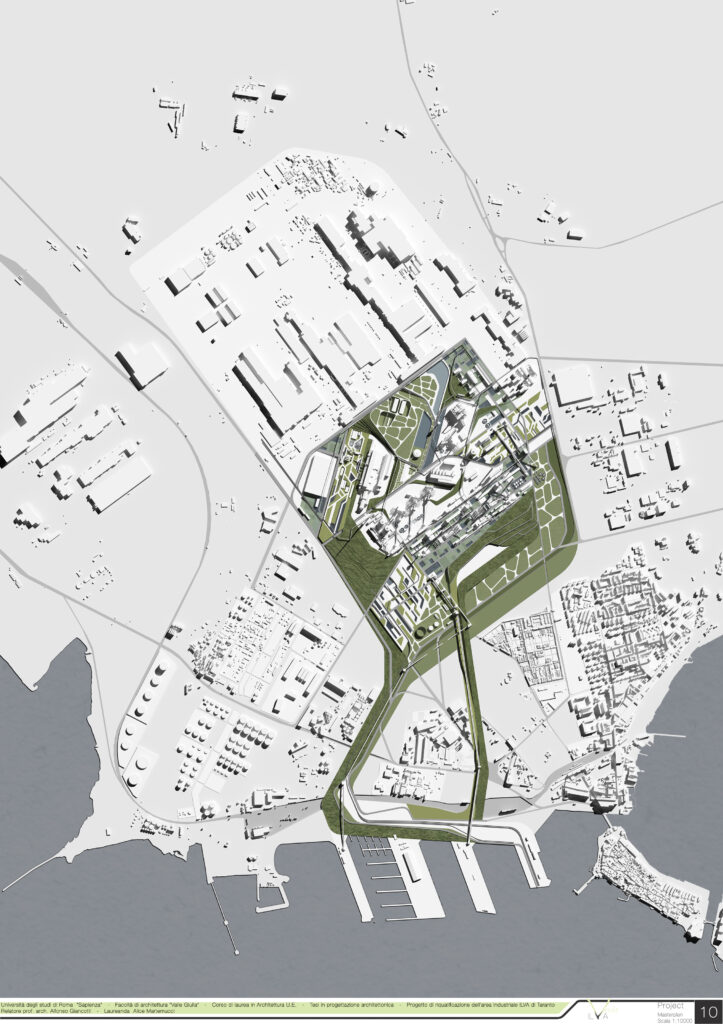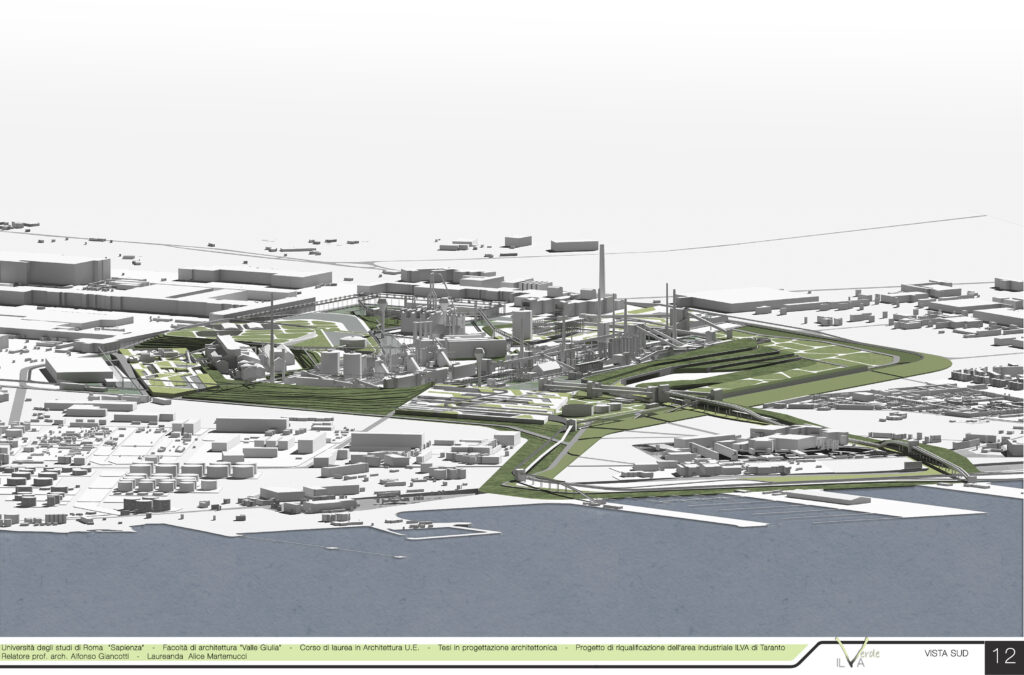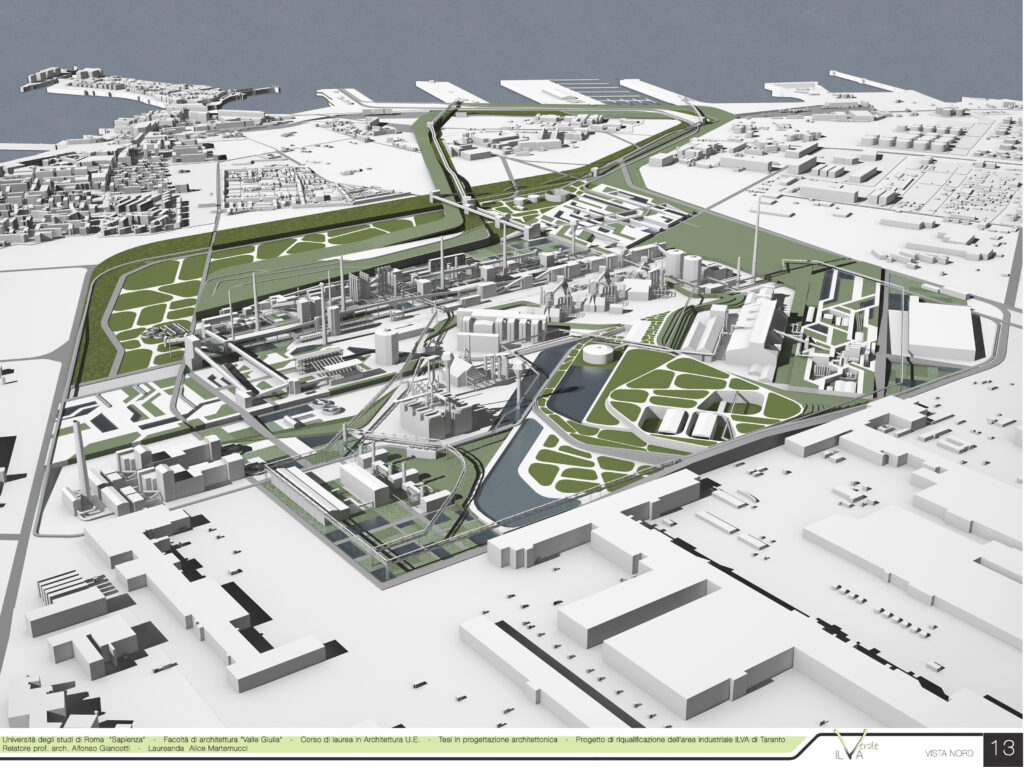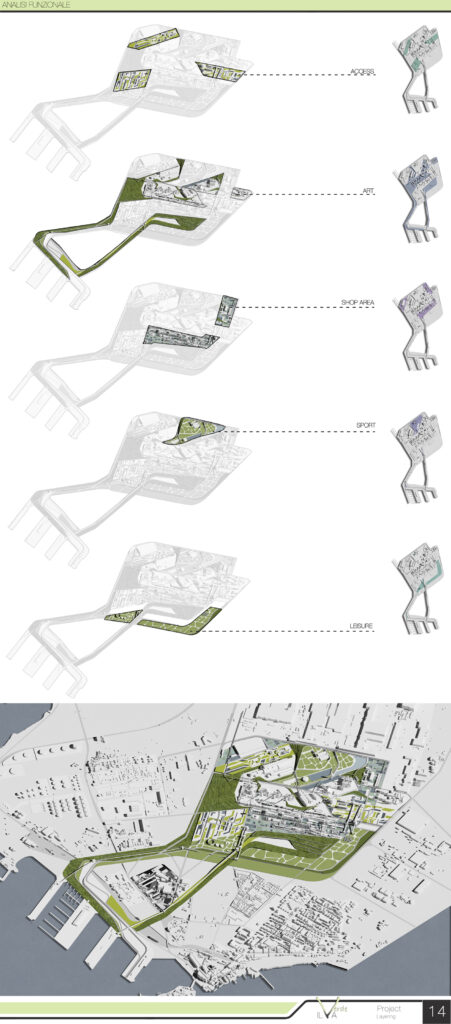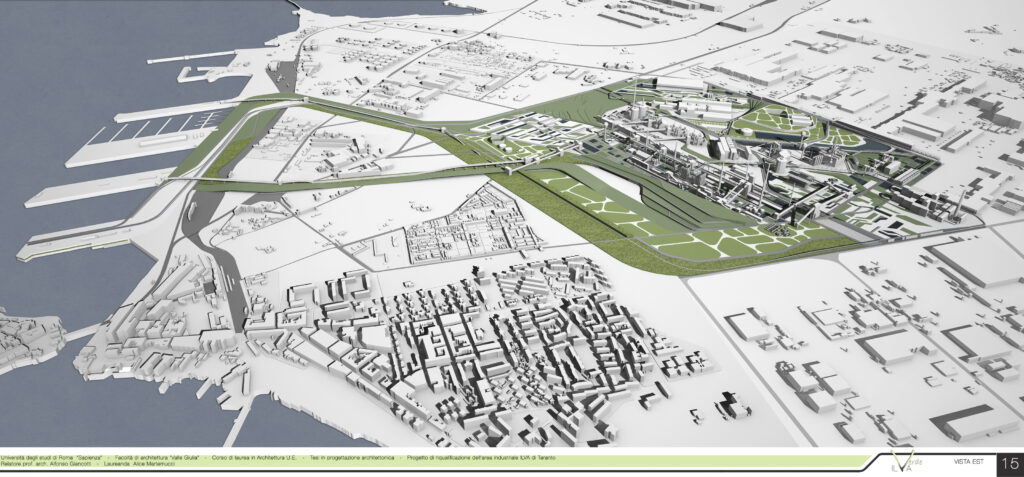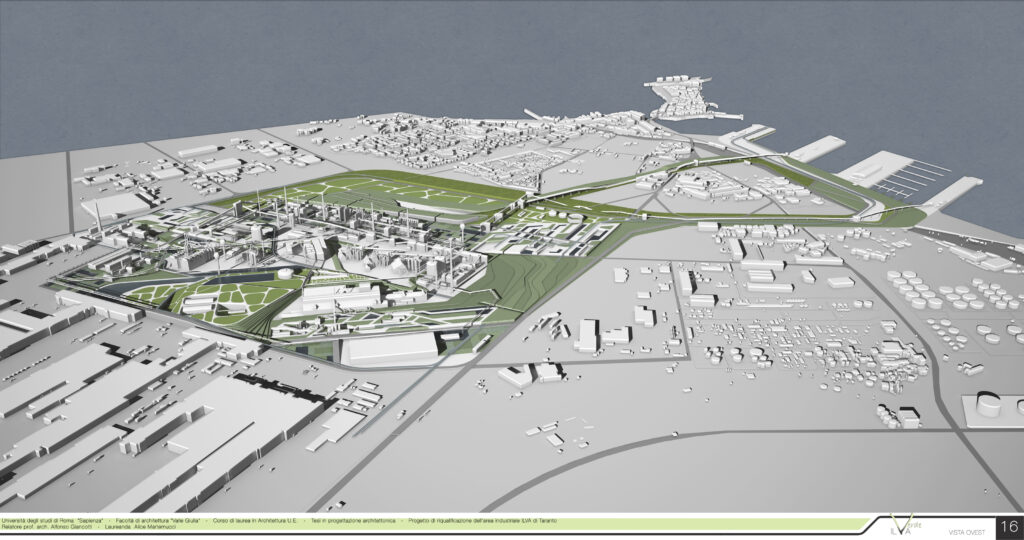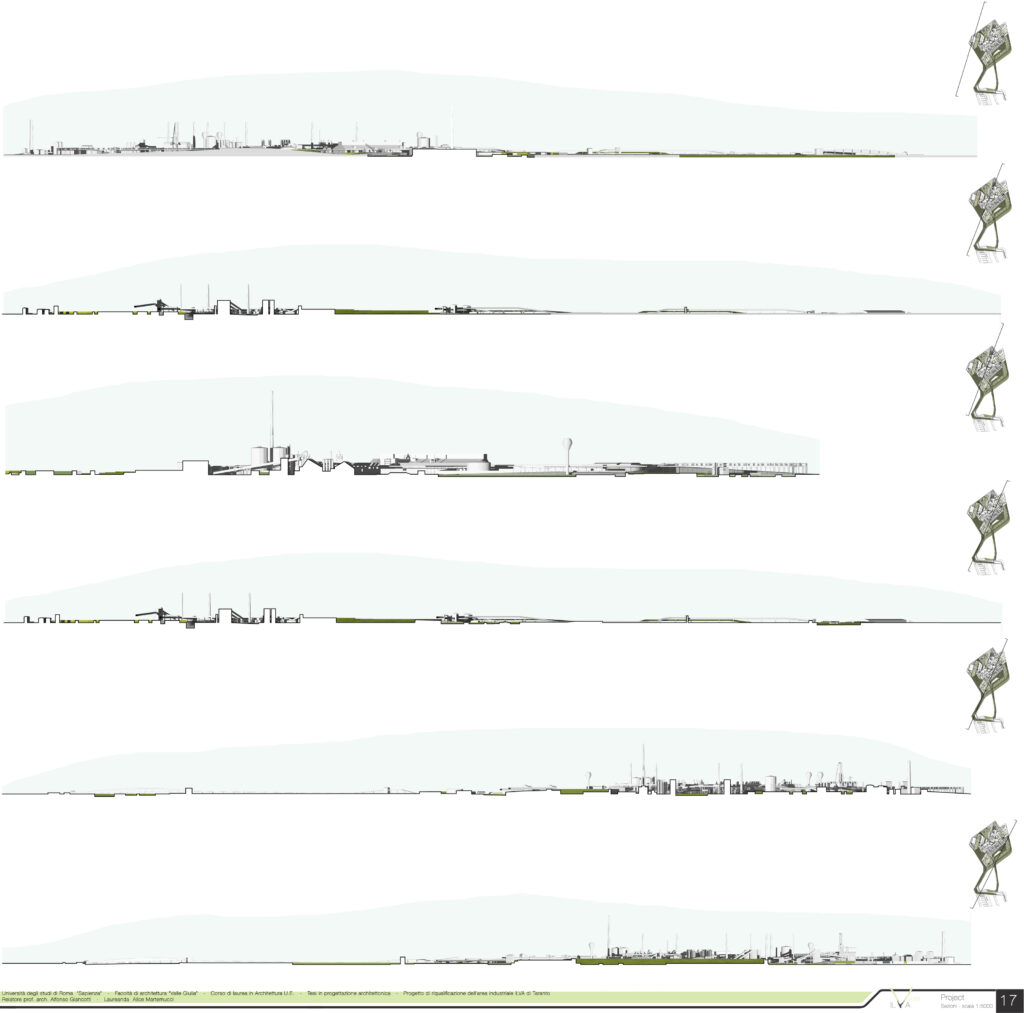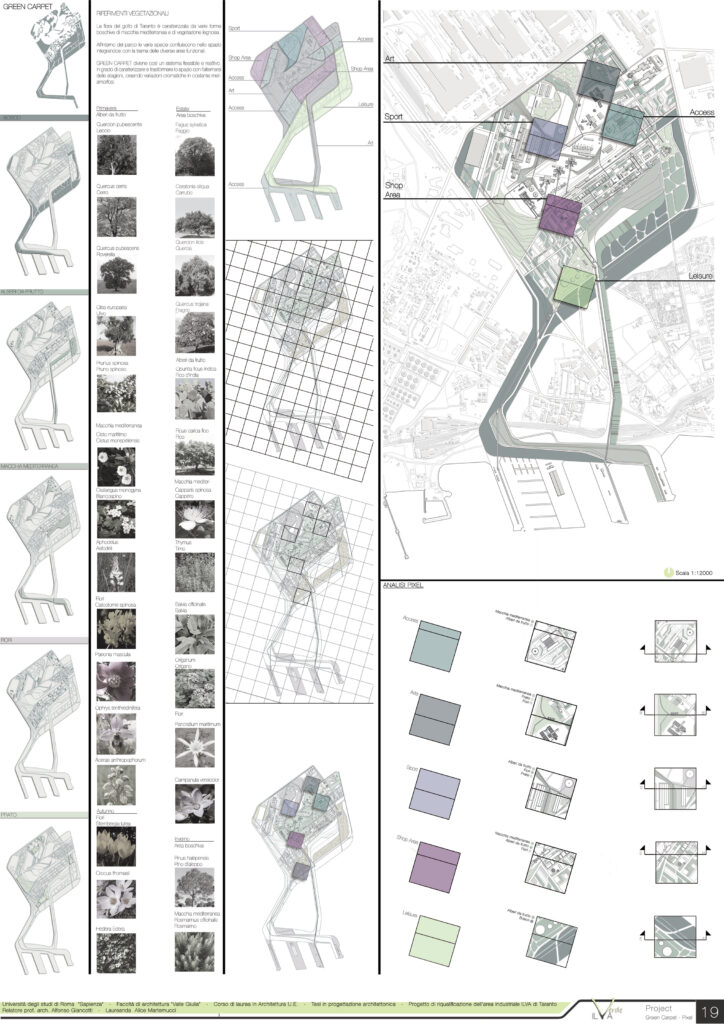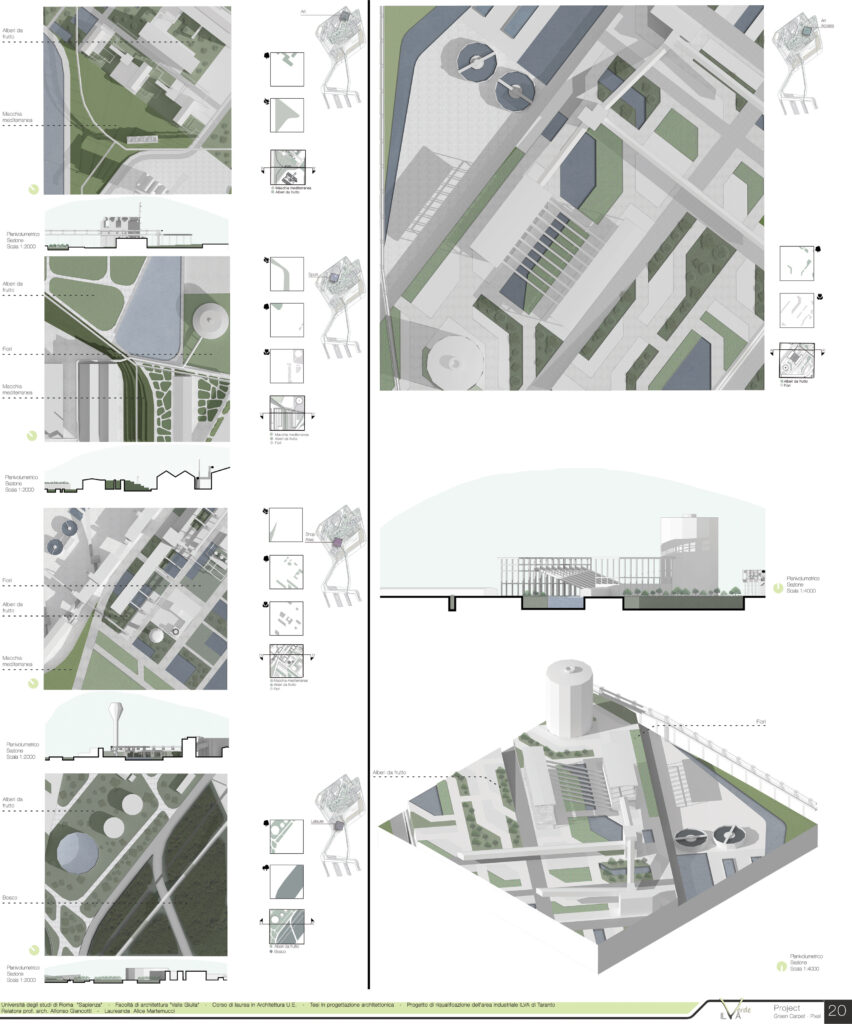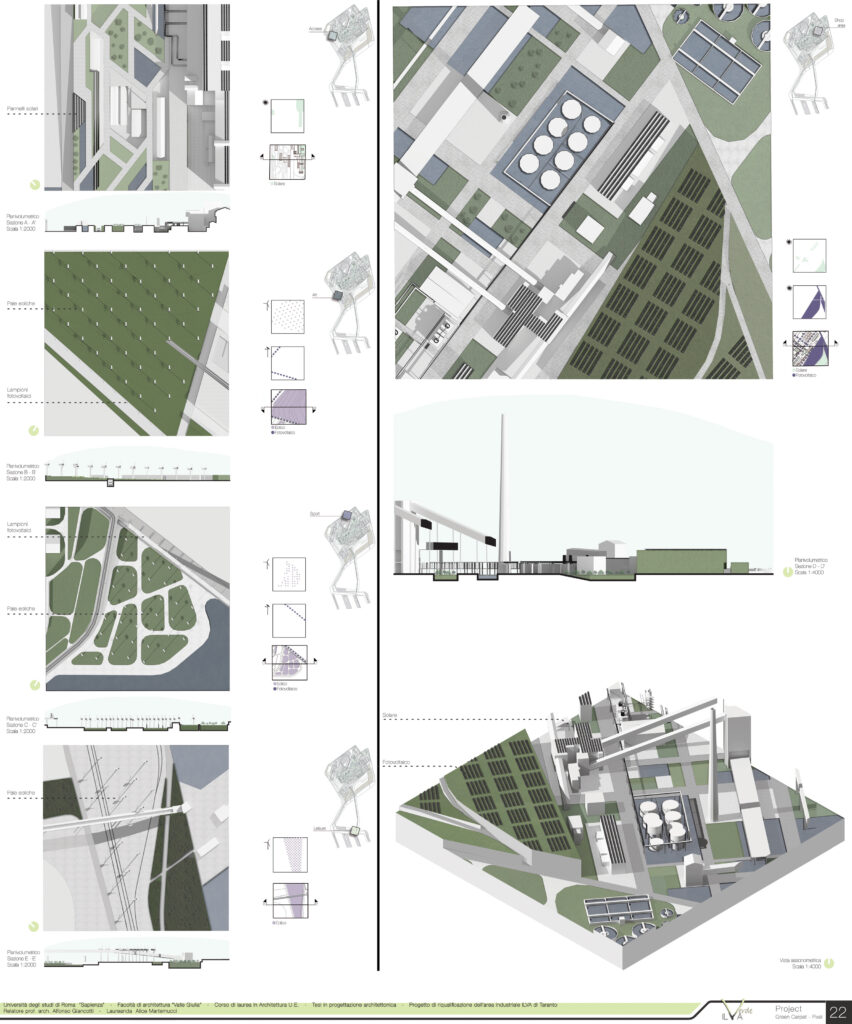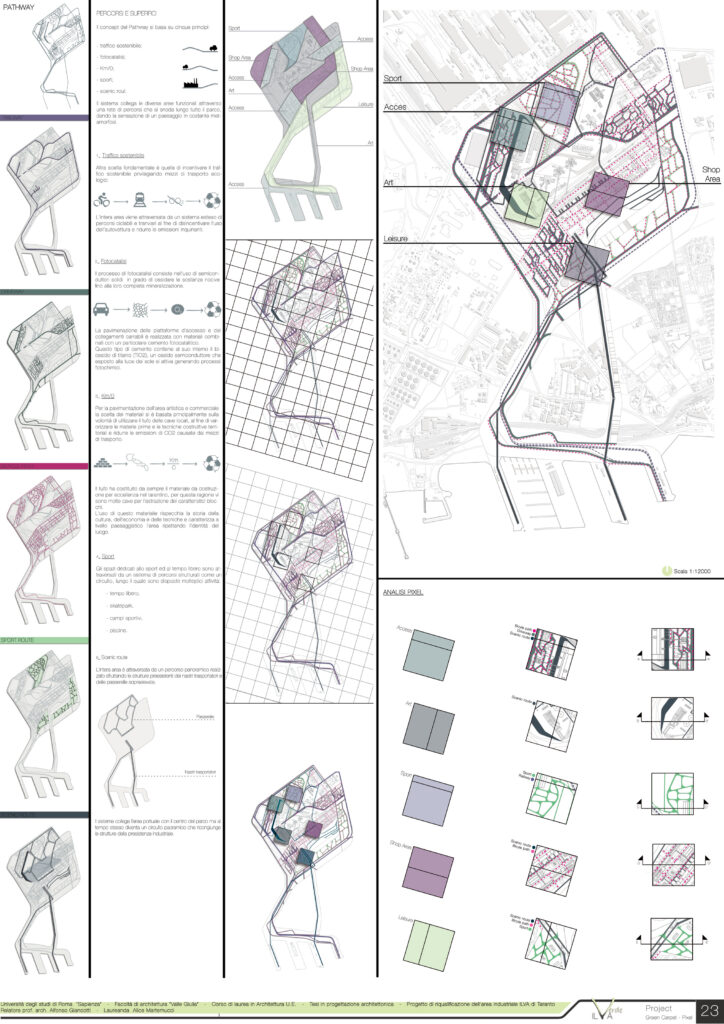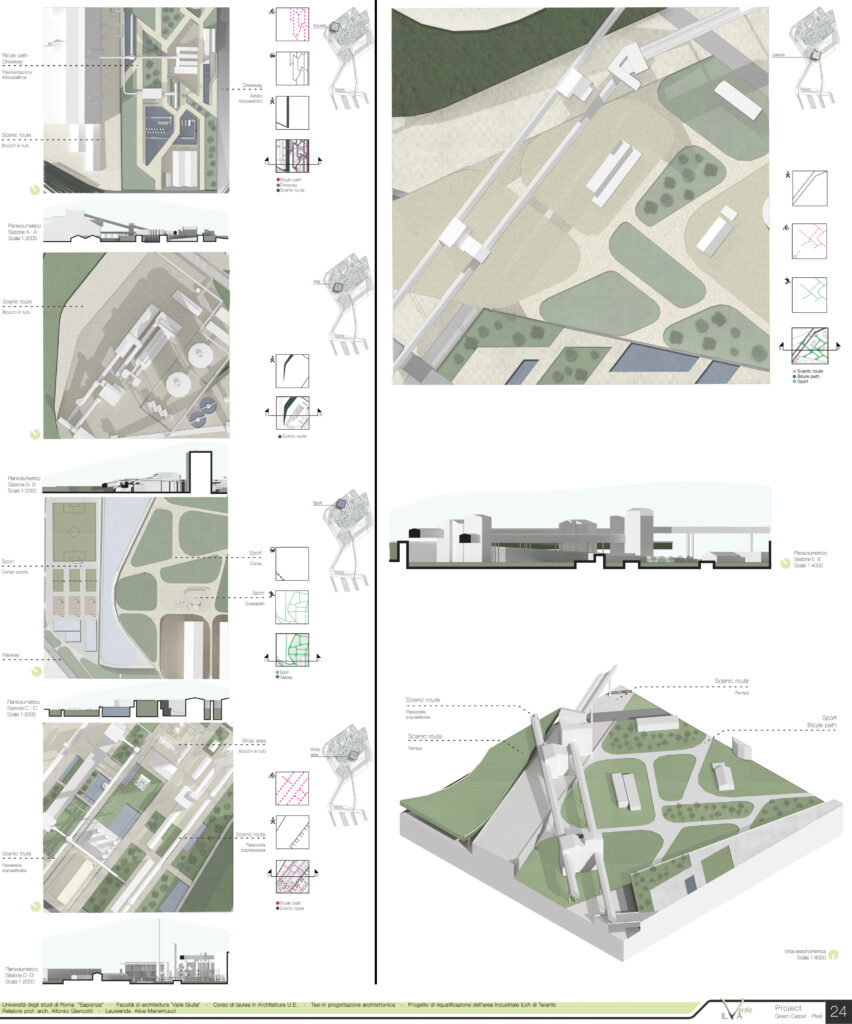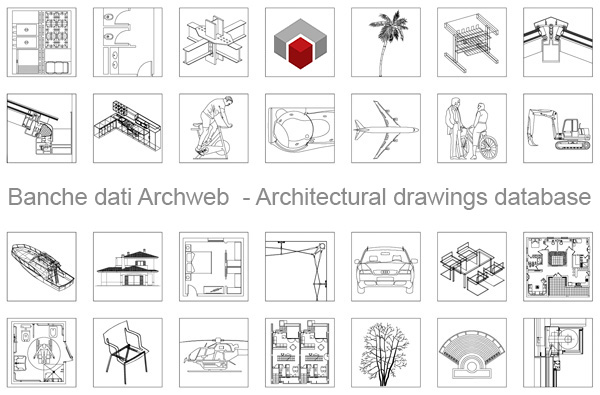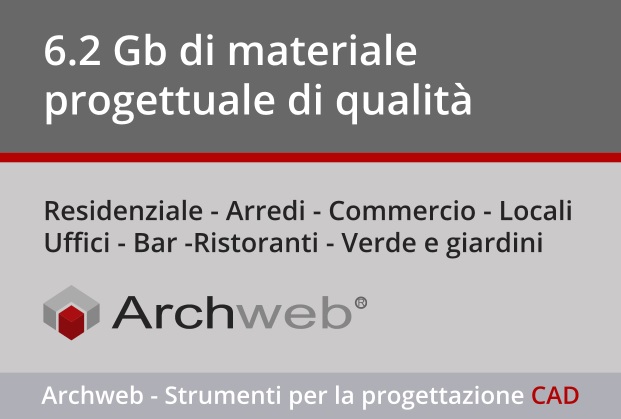Alice Martemucci
Degree thesis in Architectural Design
Degree thesis in Architectural Design
Thesis by Alice Martemucci
Contact email: [email protected]
Degree Architecture U.E. - Faculty of Architecture "Valle Giulia" La Sapienza A.A. 2012-2013
Speaker: Prof. Arch. Alfonso Giancotti
Redevelopment of the ILVA industrial area of Taranto in a multifunctional park
The Rio Conference, held in 1992, declared the emergence of environmental issues as a major theme of national and international policies. Here the need for a global government for planetary environmental issues (greenhouse effect, acidification, reduction of the ozone layer, protection of biodiversity) was affirmed. Furthermore, requests were made to integrate the objectives of protecting resources and environmental quality both in national and local territorial and economic policies and in the production strategies of economic groups. Ten years later, with the Johannesburg Conference of 2002, the environmental effects of a decade of globalization have been quantified and three results have been analyzed relating to the effectiveness of global and national, public and private policies; the balance of the state of environmental resources and risks; the balance of the direct and indirect effects of the globalization of the markets.Over the past decade, structural changes in the economy, the spread of new technologies and the development of environmental policies have made it possible to consolidate the process of 'dematerialisation' and to reduce the environmental intensity of economic development which has started since the mid-years ''70. All the main environmental indicators have decoupled from the economic indicators. On a global scale, energy consumption increased by 10.5%, Co2 emissions (energy use alone) increased by 8%, sulfur dioxide and nitrogen oxide emissions decreased, iron consumption increased by 3% (while they had grown by 11% in the previous decade).
In many developed countries, and especially in Europe, an absolute reduction in environmental loads of 4% has been achieved. Atmospheric emissions, from sulfur dioxide, nitrogen oxides to heavy metals and dioxins, have thus been uniformly and constantly reduced. Water withdrawals, in most European countries, have decreased or stabilized and the polluting load released in water bodies, in groundwater and at sea has decreased.
Over the course of this decade, the quality of the environmental problem or conflict has changed in most regions of developed countries, thanks to the regulation of water and atmospheric discharges and the disposal of waste itself. Exceptions are some limited areas and points such as the city of Taranto with ILVA, the largest steel center in Europe, the AGIP refinery, the Cementir cement plant.
For this reason Taranto is one of the most polluted European cities. Ilva di Taranto releases dioxin equal to 8.8% of the European total into the atmosphere, but there is no pollutant monitoring system in the city. In fact, the data relating to deaths from malignancies in Taranto more than doubled from 1971 to 1996. The results of the Local ASL Prevention Department, for the period 1998-2001 in the Ionian province, record around 1,200 annual deaths, data that, for lung cancer, they place Taranto among the areas of Southern Italy with a higher incidence than the national average.
98% of the benzo (a) pyrene produced in the industrial area comes from the Ilva coking plants. It is, in fact, impossible to think of a compatibility between the coking plants and a city that lives close to industry. In Taranto many associations and committees have long supported the closure of the hot area.
What can be the solution? The goal is to transform the approximately 4,000,000 square meters of the hot area into a new part of the city that enhances its extraordinary environmental resources.
In this area, which overlooks the Mar Piccolo, space and impetus can finally be given to that tourist resource of the Magna Graecia and the Latin Tarentum, given that many archaeological sites overlook precisely that stretch of water that could benefit various equipment: leisure, culture, boating. The centerpiece of the project is the creation of a large renewable energy park which will feature industrial archeology buildings recovered for new uses, spaces equipped for sport and leisure, commercial and tertiary activities.
Targets:
1_ The measure of space:
The aim of the intervention is to restore a structure to the space between things, which allows a different interpretation, to preserve the memory of the factory and build a new environment for different activities.
2_ The relationship between the park and the city:
The factory excludes the city from its perimeter. Its laws are different from those of an urban environment, made up of relationships, mediations, slow transformations. The factory subjects the land to its needs, bends the environment to its size. The work to be done to return the park to the city therefore consists in mending the tear that caused the factory.
3_Creation of a complex of parks of various types:
- recreational parks;
- cultural parks;
-natural reserves;
4_ New proposals for cultural activities The recovery of industrial complexes can lead to the use of premises suitable for hosting cultural and social activities.
Alice Martemucci
Author
Category Alice Martemucci







